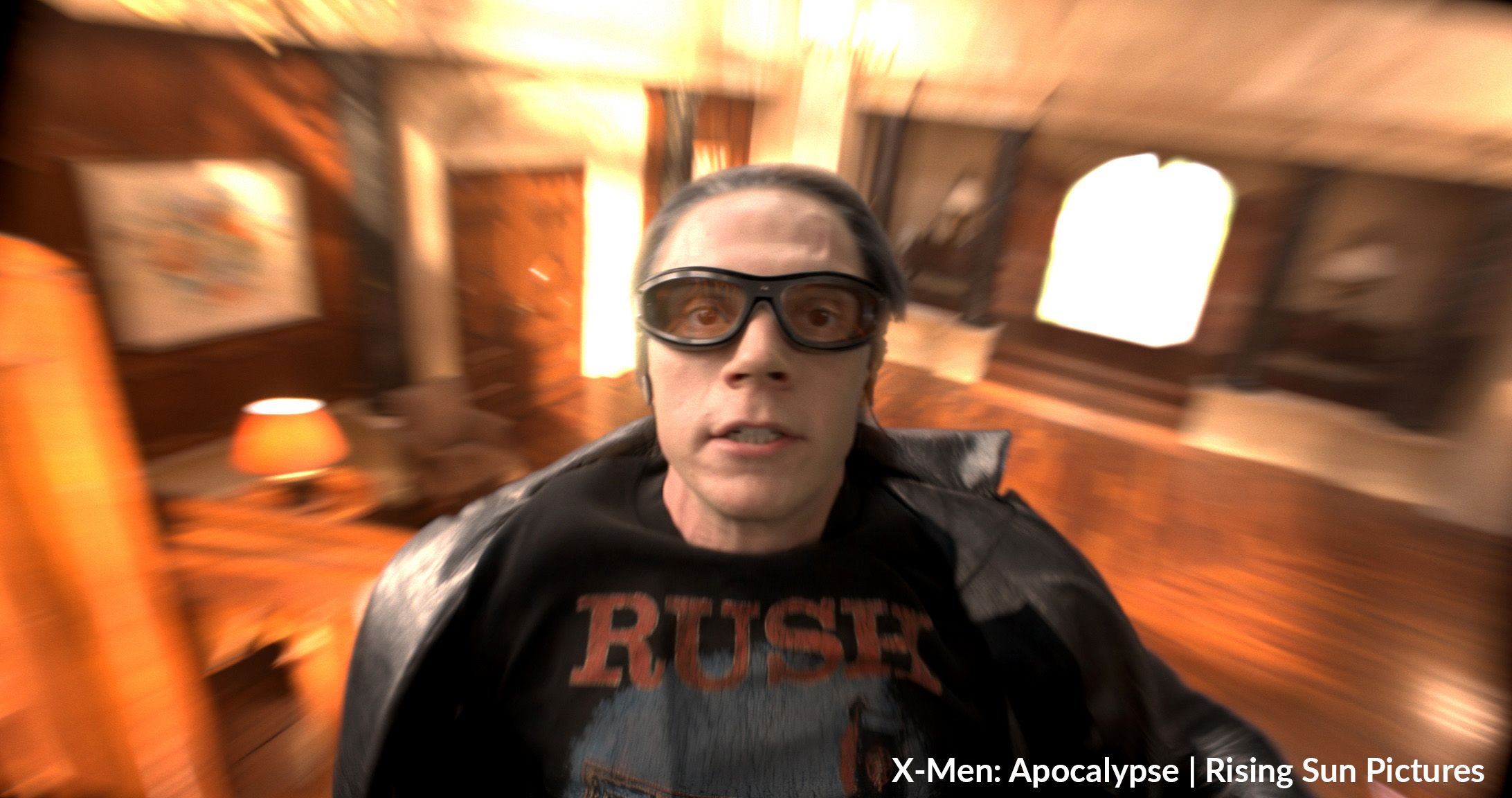More than ever before, animation and visual effects studios are seeking qualified Houdini artists. Some studios look to qualified students from schools and other training institutions to meet their needs, while other studios have developed on-the-job in-house training and internships. This special report explores the studio requirements for Houdini artists, what schools and studios can offer to help meet the high demand, and what the experience has been like for young artists as they transition into their first Houdini job.
The end game: what is a ‘Houdini job’?
But first, let's look at what a ‘Houdini job’ actually is. In the past, a Houdini job would likely have been focused on effects simulation work. But these days that’s often not the case.

Houdini artists now take advantage of the tool’s procedural capabilities in diverse roles including CG generalists, FX TDs, software engineers, animators, modelers, character artists, lighters and pipeline developers.
That’s because Houdini is used at nearly every stage in the visual effects and animation pipeline, and it’s why the demand for experienced artists is growing rapidly.
For example, the unforgettable Quicksilver mansion rescue sequence in X-Men: Apocalypse made use of Houdini effects and pyro simulations - in slow-mo - thanks to visual effects from Rising Sun Pictures in Adelaide, Australia, which had also created the effects for the Quicksilver kitchen scene in Days of Future Past.
Both sequences demonstrate the power of Houdini front-and-center, but like many other studios, Rising Sun has also been using the Houdini toolset for much broader visual effects requirements.
“Some forests in a recent production were generated in Houdini,” outlines Rising Sun visual effects artist Thomas Cant, “We also developed some city generation tools which were done for Pan, and we do a lot more modeling and lighting in Houdini than we used to as well.”
Digital Domain used Houdini to craft Magento’s magnetic field and destruction effects in X-Men: Apocalypse. Houdini is at the core of the effects pipeline at Digital Domain, which has offices in both Los Angeles and Vancouver.
At any given time the studio has between 20 and 30 artists in its effects department, all of which touch the software. Given today’s high demand, getting the right artists has now become a critical priority. “Skilled Houdini artists are always hard to come by,” says Digital Domain FX artist Steven Ong.
That’s also the experience of Animal Logic, the visual effects and animation studio located in Sydney and Vancouver. By adopting Houdini for many of the challenges in the films they work on, including the LEGO movies, Animal Logic is now hungry for talented artists to work with the software. According to FX supervisor Miles Green, Houdini is used on a daily basis.

Learning Houdini: more options than you might think
The projects identified above are just a few of the ways in which Houdini is being used right now. And beyond FX-heavy features, Houdini is also used regularly in animated films, television commercials and games.
So – are there enough trained Houdini artists to fill the gaps?
Traditionally, schools and training institutions have run great Houdini courses, especially those that are certified by SideFX. Now, too, animation and effects studios are partnering with schools to help train up the best artists possible and some even offer Houdini internships for students to get experience on real productions.
.jpg)
X-Men: Apocalypse | Digital Domain
One of the most well-known schools that teaches Houdini is Bournemouth University. It houses the National Centre for Computer Animation (NCCA), a SideFX-certified school where computer graphics is taught and researched.
Students studying a Master of Arts in Digital Effects there have the most access to Houdini, while other courses at the NCCA also touch on the software. Programme leader in the MA Digital Effects Philip Spicer says there is a heavy concentration on Houdini at NCCA, despite “many misapprehensions and misunderstandings” about the complexity of Houdini – often a reason put forward as to why schools and students sometimes delay learning about the tool.
“After many years of teaching Houdini,” describes Spicer, “I can state with absolute conviction that Houdini is simple to learn. It can do everything exceedingly well, it is an equal platform for both artists and scientists, and it is the future of our industry.”
Spicer suggests, too, that part of the power of Houdini from an educational stance is its ability to reveal the underlying technology behind computer graphics operations. “This aspect helps prepare a student for any other software they might encounter,” he says, “allowing them to separate the wheat from the chaff, and create efficient optimal pipelines as a result.
That’s an approach to teaching Houdini backed by Digital Domain’s Steve Ong, "I think learning Houdini at a school can really can guide the students. Sometimes Houdini is a different kind of beast when you’re learning it, and then applying it to a production can be a very weird sort of connection that you have to make. At the beginning a lot of students will say, ‘Why does Houdini do this or why does Houdini do that?’ But the ones who make that connection are the ones that eventually will go on to be good Houdini artists."
I think learning Houdini at a school can really can guide the students. At the beginning a lot of students will say, ‘Why does Houdini do this or why does Houdini do that?’ But the ones who make that connection are the ones that eventually will go on to be good Houdini artists.
by Steve Ong
In order to make sure its Houdini courses are providing that connection Ong refers to, and match industry expectations, the NCCA regularly invites industry speakers to discuss their recent VFX and animation work. There’s also an annual Industrial Advisory Board made up of industry participants. At the meetings of this Board, Spicer says the recurring opinion is that “generalist-specialist graduates with equally good art and science skills, who can efficiently pull a shot together from start to finish with a high visual quality will do really well in the industry.”
Schools certainly give students a structured and solid way of learning about visual effects and the role of Houdini in that process. But some new ways of learning VFX have been emerging in recent years.
For example, Rising Sun Pictures has partnered with the University of South Australia to offer a hybrid Houdini learning experience. Here, as part of the university’s Bachelor in Media Arts, around 30 students spend a few weeks studying Houdini and then produce a showreel. From that, Rising Sun chooses nine students to work at the studio for ten weeks where they’ll use Houdini on actual visual effects productions. In addition, the studio has a night course on Houdini aimed as an introduction to the software.
Similar to the Bournemouth/NCCA experience, one of the Rising Sun’s aims with the university course is to show students just how accessible and useful Houdini is. “In the first lesson we get students to do a spiral staircase, which you can do very quickly in Houdini,” says Rising Sun’s manager of training and education Kirsty Parkin. “It would take about a week in Maya. So students can see very quickly that they can get fast and effective results. They’ll say to me, ‘Oh, wow, I didn't realize it was this easy to create this.’”
After the first university-based Houdini course, Rising Sun hired three of the students as full-time Houdini artists and were very happy with their performance, according to Parkin, who also noted that “we had people from all over Australia ring us asking, ‘When are your next batch going through because we want to hire them?’”
Rising Sun FX TD and Houdini Instructor Dan Wills credits the real-world experience students gained from both the university studies and time at the studio for the success of the approach. “During the training we get them to produce something that's like a shot that we would be executing in real production on the floor,” he says. “I think making that environment as similar to the real world working with the real effects team is a very helpful thing. It gives them a much better picture of what the actual work's going to be like.”
.jpg)
Rising Sun's class reviewing Quicksilver
"We have them running little mini-dailies every couple of days for their submissions,” adds Rising Sun’s Thomas Cant. “That’s about getting used to and even just adjusting to the idea of your work being shown in front of a large group of people and getting critiques. And not being precious or defensive about things but just being very flexible and easy going with how you respond to other people's requirements - a big part of working in VFX.”
Real-world experience is also the trademark of Animal Logic’s approach to Houdini training. Realizing the need for a ramp-up in knowledgeable artists in the tool, the studio started its own internship program. “We specifically sought to find interns for the effects team,” says Animal Logic training department supervisor Krista Jordan, “keeping in mind that we really wanted to grow that skillset, and knowing that there was an interest in Houdini and that style of work.”
The interns at Animal had typically already studied some kind of 3D course, though not necessarily Houdini. Working with the team at Animal Logic meant having first-hand access to a fully integrated Houdini pipeline. “The interns were very new to Houdini but they were able to pick it up,” says Animal’s Miles Green. “There is that misperception that it is more difficult to learn, but once you've got past that you can take advantage of the extra level of depth.”
There was an added benefit to immersing interns into Houdini, says Jordan, and that was understanding the flow of data through Animal Logic’s pipeline, and learning about the various roles in visual effects and animation.
Often you still get that really animation-centric or compositing-centric view on what the process is. So one of the greatest challenges for all software companies and all educators is to teach about the whole workflow and all the myriad of opportunities and styles of work that exist within that. And Houdini touches everything so it was really useful.
by Krista JordanBut what do students and interns think...
Studios and schools are doing their part to improve Houdini training - but what has this experience been like for students? More importantly, has the improved training resulted in the desired result of a great job? Let's look at a few examples of some past and present Houdini students and interns.
Josh Methven is a graduate of the Vancouver-based and SideFX-certified Lost Boys Studios School of Visual Effects, where he completed the FX TD program which centers around Houdini. After graduating, Josh scored jobs at The Embassy and Method Studios as an FX TD and Crowd TD, working on films such as The Hunger Games Mockingjay Part 2, Divergent: Allegiant and the upcoming Fantastic Beasts and Where To Find Them.
But when he began his studies at Lost Boys, Methven says he didn’t have any knowledge about the visual effects industry. “During the course I began to realize how 3D comp elements were created, and just how much time and effort they could take. I also began to realize just how much easier Houdini could make it for us as FX TDs to do our job compared to other software solutions. The raw proceduralism of Houdini certainly helped me grow an appreciation for the software and opened my eyes to just how much more difficult it could be without those technical methods.”
Methven is a strong advocate for learning Houdini via school-based learning. “There just isn’t a lot online that can teach you extensively the way a school dedicated for that purpose can. For those at an industry level already with a possible existing knowledge in node-based software I’d say it’s easier to adapt to. Houdini unlocks a great many job opportunities.”
Another successful graduate with Houdini training is Bournemouth’s NCCA alumni Goncalo Cabaca, who completed an MA Digital Effects in 2009. After several Houdini projects completed in his study, Cabaca began work at SideFX as an intern before gaining experience at Imageworks, Dr. D Studios, Method Studios and Industrial Light & Magic.

NCCA programme lead Philip Spicer described Cabaca’s final masters project, in which Houdini was heavily used, as one involving “painting and drawing without any fear of the tools – and leveraged L-systems, shape morphing, creature rigging and animation, fur, flocking systems and matte paintings.”
As a current student learning Houdini, Anastasia Opara is a third-year 3D Visual Art student at the Creative Media and Game Technologies programme at NHTV Breda University of Applied Sciences in The Netherlands. One of Opara’s specializations includes studying Houdini which, she says, has a power and flexibility that ‘absolutely blew me away’.
“My love for experimentation thrived within the Houdini workflow,” Opara notes. “Being able to connect seemingly unrelated elements such as vertex position and sound was the kind of freedom that made me fall in love with Houdini. I felt like a child who was told she can learn how to do magic, and my immediate reaction was to go and acquire a wand.”
The procedural aspects of Houdini are the aspects of the software most appealing to Opara. “The ability to track my thinking and capture it inside of a program by ‘teaching’ it to ‘think’ the way I do fascinates me. Houdini gives you results based solely on your input rules, whereas we often process information with the knowledge we do not even realize we are applying. The collaboration with Houdini can be a lot of fun because of that factor, and an inspiration to many creative ways of solving a problem.”
For more information on how to get started with learning Houdini (whether through formal training or self-taught), visit: SideFX.com/learning-paths/
COMMENTS
DMNS 6 years, 8 months ago |
<3
Please log in to leave a comment.